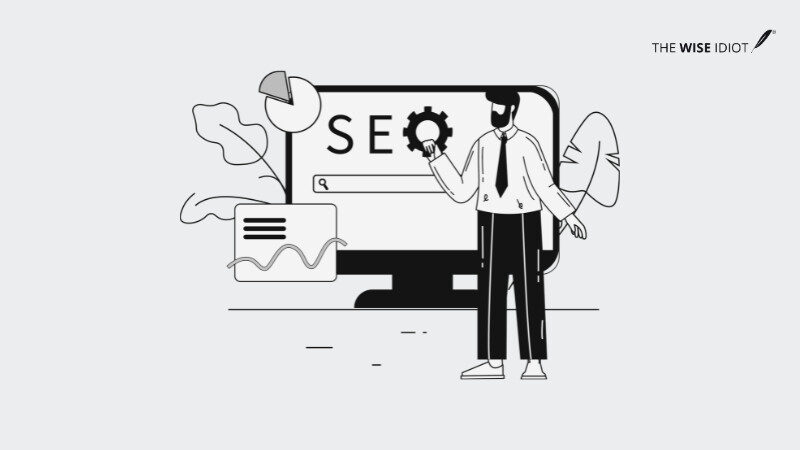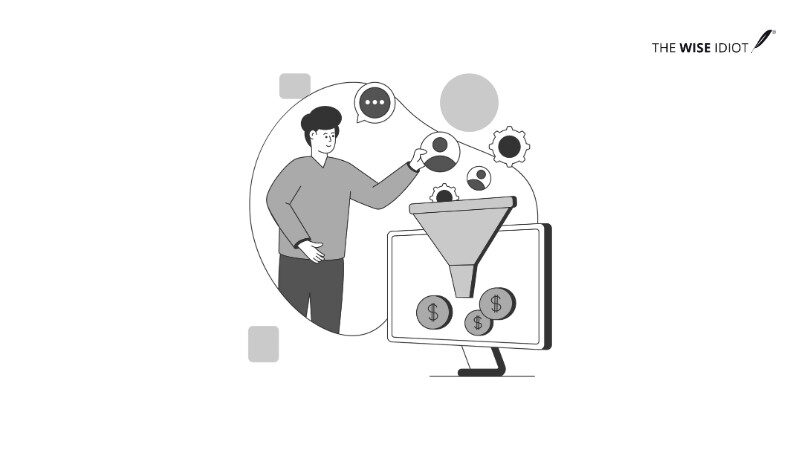2025’s top B2B marketing challenges and how to solve them.
B2B marketing requires reaching more buyers, on more platforms, with fewer resources, and it must be done faster than ever.
As per Salesforce, 69% of B2B professionals have reported that sales is becoming increasingly tough. What’s more? An increasingly skeptical audience, a tech landscape that can change overnight, and internal pressure to prove every campaign’s ROI!
But here’s the good news: every challenge is also a chance to do things better. Maybe it’s about creating smarter content, using AI without losing the human touch, or finally fixing that overloaded tech stack.
2025 gives you the chance to build marketing that actually works and makes a real difference. You don’t need to do more, you just need to focus on what really matters and stay open to change.
So let’s take a look at the eight biggest B2B marketing challenges this year, and talk about what you can actually do to handle them in a practical, effective way.
1. Doing More with Less
Marketing leaders are under constant pressure to deliver bigger results with smaller budgets and leaner teams. This means wearing multiple hats and delivering high-quality work on a shoestring.
What you can do:
-
Focus on high-impact campaigns. Pick two or three initiatives that can move the needle, rather than spreading yourself thin.
-
Repurpose and recycle. Turn one strong piece of content into a webinar, infographic, and social posts.
-
Cut the clutter. Say no to meetings or tasks that don’t directly support your goals.
-
Partner up. Co-host events or share resources with complementary brands to stretch your budget.
If you need help building smarter B2B marketing campaigns, partner with experienced specialists like The Wise Idiot who can assist with strategy and execution.
2. Understanding Modern Buyers
Today’s B2B buyers research independently, trust peer reviews over ads, and expect relevant, personalized experiences. If you talk at them instead of with them, you’ll get ignored.
What you can do:
-
Mine your data. Use customer insights to craft messages that speak directly to individual needs.
-
Try interactive content. Quizzes, assessments, and calculators let prospects explore solutions at their own pace.
-
Be transparent. Share clear pricing, demo options, and honest customer reviews.
-
Adopt product-led growth. Let prospects experience your product firsthand with free trials or self-serve demos.
To understand these shifts, keep an eye on b2b marketing trends and update your strategy regularly.
3. Standing Out with Brand and Content
When everyone’s shouting, you need a strong brand voice and valuable content. Generic blog posts won’t win hearts or search rankings. “Content Marketing is all the marketing that’s left,” says Seth Godin, Author, Tribes.
What you can do:
-
Define your story. What makes your brand unique? Tell that story in every piece of content.
-
Invest in quality. Deep-dive articles, case studies, and real-world examples build trust.
-
Mix formats. Videos, podcasts, and infographics reach different learning styles.
-
Showcase customer wins. Let real users share how you solved their problems.
For support, a B2B Content Marketing Agency can help you scale personalized, effective storytelling.
Did you know?
28% of marketers say their organization’s B2B content marketing is highly successful, while 57% consider it moderately successful. Meanwhile, 15% feel their content efforts are barely or not successful at all (CMI).
4. Using AI and Ensuring Data Quality
AI tools promise huge efficiency gains, but bad data and unclear goals can turn them into a headache. You need both the right technology and trustworthy information.
What you can do:
-
Pilot smartly. Test AI-powered personalization or analytics on a small scale before rolling out.
-
Clean your data. Regularly audit your CRM to remove duplicates and outdated records.
-
Combine human and machine. Use AI for pattern spotting, but rely on human insight for interpretation and strategy.
-
Stay compliant. Train teams on privacy rules so data-driven efforts don’t backfire.
This is especially critical for B2B marketing SaaS companies relying heavily on data, automation, and customer experience.
5. Choosing and Prioritizing Channels
With LinkedIn, podcasts, events, email, and more, it’s tempting to try everything. But every new channel adds complexity and drains your attention.
What you can do:
-
Map your buyer’s journey. Focus on the top three channels your ideal customers actually use.
-
Empower your team. Encourage employees to share thought leadership on social media, not just your brand account.
-
Test and learn. Run small experiments, measure results, then double down on what works.
Start with where your audience already lives—LinkedIn marketing services can help you generate high-quality leads and visibility.
6. Aligning Teams and Building Talent
Finding marketers with niche skills like AI prompting, analytics, performance marketing is tough. Even when you hire them, marketing and sales teams often pull in different directions.
What you can do:
-
Make learning non-negotiable. Host regular workshops on the latest tools and tactics.
-
Set shared goals. Align marketing and sales around the same KPIs and revenue targets.
-
Foster autonomy. Give team members ownership over campaigns, so they feel invested in the outcome.
For example, your performance marketer runs a quick session on using ChatGPT to generate A/B ad variations. It can be short, effective, and shared in Slack for future reference.
If you’re optimizing your b2b sales pipeline, close collaboration and mutual understanding between sales and marketing is non-negotiable.
7. Proving Impact with Better Metrics
Long B2B sales cycles and multiple decision-makers make it hard to know which actions truly drive revenue. If you only measure clicks and downloads, you miss the bigger picture.
What you can do:
-
Build holistic dashboards. Combine CRM data, web analytics, and customer feedback in one place.
-
Refine attribution. Move beyond last-click models, and test multi-touch and time-decay approaches.
-
Focus on lead quality. Track how many Marketing Qualified Leads turn into Sales Qualified Leads, not just raw numbers.
Improving your b2b marketing funnel measurement can help connect the dots between top-of-funnel activities and bottom-line outcomes.
8. Simplifying Your Tech Stack
Tool overload is real. Each new platform adds cost, training time, and integration headaches. Many companies pay for features they never use.
What you can do:
-
Audit ruthlessly. Every quarter, list all your tools, their costs, and usage rates. Cut the low-performers.
-
Choose bundles. Look for platforms that cover multiple needs—marketing automation, CRM, analytics—in one package.
-
Train your teams. Ensure every user knows how to get value from each tool, so nothing goes underused.
Simplifying tools isn’t just about cost—it improves focus and makes scaling B2B marketing campaigns more efficient.
Final Thoughts
Let’s be real, 2025 won’t make B2B marketing any easier. Buyers will keep raising the bar, teams will still feel stretched, and new tools will show up faster than your budget approvals.
But that’s not the full story.
This is also a year to double down on what truly works: knowing your audience deeply, building a brand that actually connects, simplifying where you can, and measuring what matters. You just need to do the right things, and do them well.
The B2B marketing challenges ahead may be tough, but they’re not impossible. The marketers who succeed in 2025 won’t be the loudest or the busiest. They’ll be the ones who stay sharp, adapt quickly, and stay focused on what their customers actually care about.
FAQs
1. What is the biggest B2B marketing challenge in 2025?
One of the biggest challenges is doing more with less. Marketers are expected to deliver strong results with limited budgets, smaller teams, and tighter timelines. It’s forcing teams to prioritize high-impact work, streamline their tech stack, and focus on what actually drives growth.
2. How can B2B marketers stand out in a crowded market?
You need a strong, consistent brand voice and content that actually helps your audience. For example, generic blog posts won’t work. Deep-dive content, real customer stories, and formats like video or interactive tools can build trust and attention. Hiring a B2B Content Marketing Agency can help fast-track this process.
3. How do I know if my B2B marketing is working?
Look beyond metrics like clicks and downloads. Track how many leads become real sales opportunities, and how marketing contributes to revenue. Use multi-touch attribution and combine CRM data, website analytics, and customer feedback to see the full picture of your b2b marketing funnel and overall b2b sales pipeline health.









